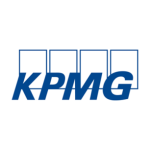Watch ITR and KPMG's webinar: The development of China's Hainan free-trade port
China’s 13th National People’s Congress (NPC) and the Chinese People’s Political Consultative Conference (CPPCC), broadly equivalent to the lower and upper houses of parliament in other jurisdictions, held meetings (the so-called ‘two sessions’) in the period of May 21 to 28 2020. The meetings were held two months later than in previous years as a result of the COVID-19 disruption.
The NPC discussions focused on recovery from COVID-19 and future economic development. A number of economic stimulus measures were announced in Premier Li Keqiang’s government work report address to the NPC. In the tax space, there is an extension of the expiry date for tax relief measures, introduced at the beginning of the COVID-19 outbreak, from June (the original expiry date) to the end of 2020. Furthermore, in an additional measure, corporate income tax (CIT) and individual income tax (IIT) payments by small businesses and sole traders are deferrable to 2021.
For inbound and outbound investment, the belt and road initiative (BRI) was flagged in NPC discussions as a key focus of development for the future. A key element of the plans for this further opening-up and international integration is the establishment of the Hainan free-trade port. On June 1, following conclusion of the two sessions, the Chinese government released a master plan for polices to build Hainan Island, on China’s south coast, into a globally-significant free-trade port by 2050.
Policies will be rolled out to facilitate trade, liberalise investment, allow capital to flow freely cross-border, make transit more convenient for people, and ensure the secure flow of data. Improvements to the taxation and legal systems will be made to support the development of high-tech industries, tourism, and modern services.
Setting innovative tax measures
Measures will be adopted in several stages. Under the plan, the proposed customs and tax system will consist of a zero tariffs regime together with several innovative tax measures. The key tax measures are outlined below.
By 2025:
A reduced 15% CIT rate will apply to enterprises in encouraged industries. The standard China CIT rate is 25%;
IIT will be levied at a maximum rate of 15% for personnel with high-end or urgently-needed skills. China’s marginal IIT rate is 45%;
For the period to 2025, a CIT exemption will apply to foreign-sourced dividend income received by enterprises in the tourism, modern services and high-tech industry sectors, i.e. the exemption method of double tax relief in place of the existing CIT law credit relief method; and
100% tax depreciation and accelerated depreciation regimes for eligible capital expenditure.
By 2035:
A simplified tax system will be in place, i.e. streamlining various turnover taxes (such as VAT, consumption tax, vehicle purchase tax) into a ‘sales tax’, which is a tax exclusively for application in Hainan. This means that, by 2035, there would be only seven taxes applied in Hainan (China has 13 taxes);
The 15% reduced CIT rate will expand to cover all enterprises established in Hainan; and
IIT will be levied at 3%, 10% or 15% for all individuals residing in Hainan for more than 183 days in a tax year, going beyond those with particular skillsets.
The plan also relaxes conditions for foreign staff to obtain work permits. Specific sectors, including aviation, shipping, telecommunications, and finance, will also be supported with tailored measures. Further implementation detail on these incentives is set to be released during the course of 2020.
Lewis Lu
T: +86 21 2212 3421












